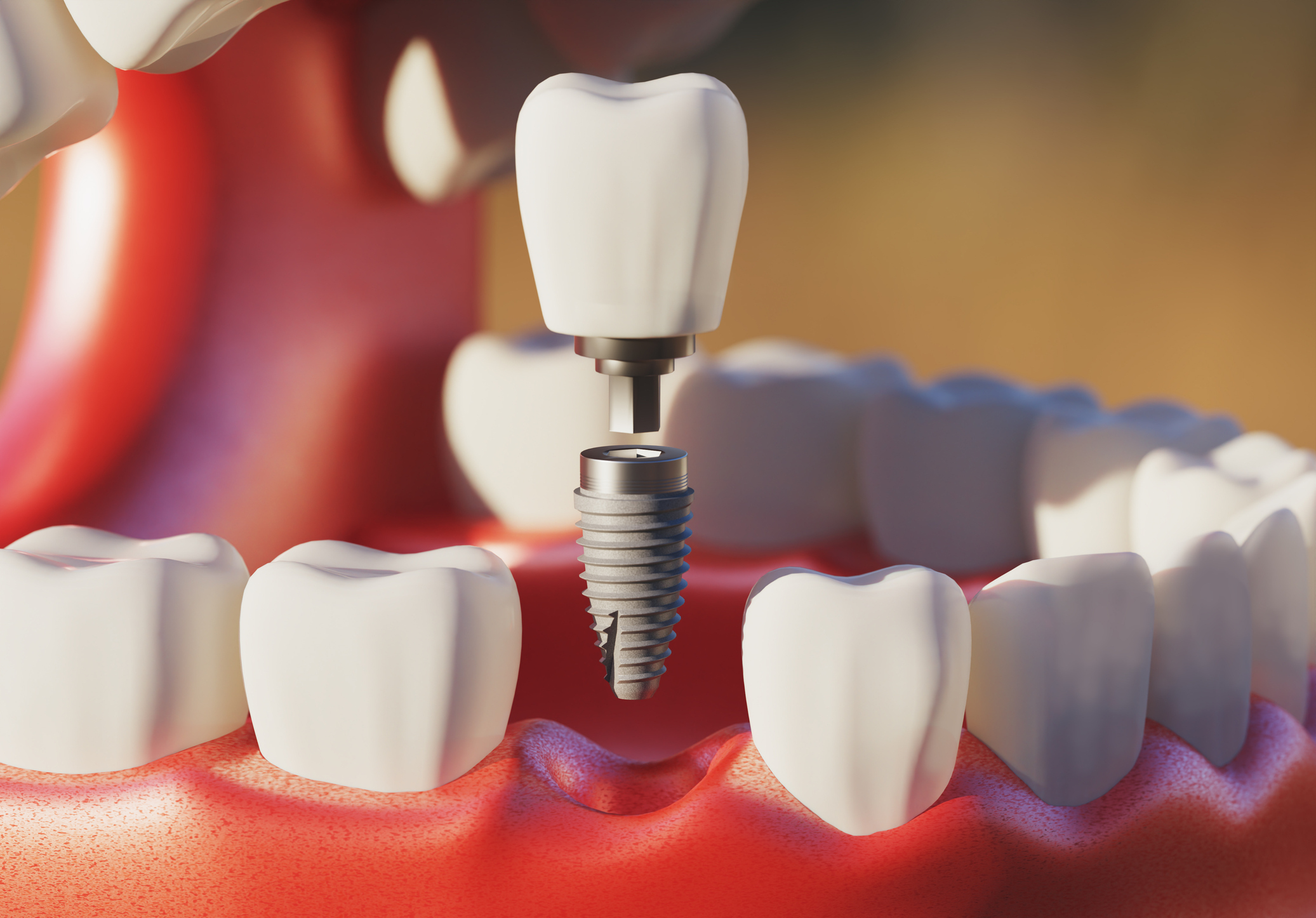When implants are needed to replace missing teeth or the jaw bone needs to be reconstructed after traumatic injuries or following removal of cysts or tumors, an oral surgeon first has to evaluate the defect and decide if bone volume and contour has to be reconstructed.
Teeth naturally grow roots into the jaw bone for both stability and function. Under normal circumstances, this also provides plenty of bone mass to work with for replacements with dental implants. However, when a tooth has been infected, the local bone mass could be compromised or weakened. In these cases, a bone graft is necessary first to resolve the anchoring problem.
History of Bone Grafting
Bone grafting has been in use for quite a while, especially in trauma cases or where infection, benign cysts and benign tumors or cancers have caused significant damage. Once bone grafting has been done and the bone has healed an oral surgeon and your dentist working together can complete the restorative work such as permanent artificial bridges or implants supported crowns or bridges to restore normal chewing function and replace missing teeth. The difference can be amazing, from simple confidence to affecting how a patient speaks clearly as well as appears esthetically.
Bone grafting works in the following way - a portion of bone is taken from elsewhere in your jaw bone, from medically-cleared donor bone, animals (cow or horse) and tissue engineered synthetic replacement and is placed in the area of jaw bone that needs to be reconstructed to achieve the appropriate volume and contour, causing it to bond and create new bone structure. In most cases, bone grafting works with any of the sources described above.
What Makes Bone Grafting Special
Bone grafting is definitely not a typical dental procedure. The preparation and work is handled by a specialist in most cases, specifically an oral maxillofacial surgeon. These surgeon specialists are trained and experienced in dealing with some of the most complex bone reconstruction, especially as it involves the mouth and face. Bone grafting itself comes in different forms, basically categorized by the material type used for the actual graft. The bone sourcing can come from the patient’s hip, ribs, tibia (leg bone) or the jawbone or alternatively from an animal source or a tissue engineered product. The choice of site and source depends upon the amount of bone needed and the size of the defect that needs to be reconstructed.
Once a bone graft is in place, it then needs to be protected to prevent infection and allow the body’s healing process to integrate it into the native bone. In many cases, membranes are applied that eventually resorb or melt away, or can be nonabsorbable and need to be removed at a later point to protect the bone graft while it is healing from bacterial in the mouth and saliva. Membranes are regularly used where a bone graft is placed.
The teams at Northwest Oral & Maxillofacial Surgery are board certified and highly experienced, working together in a coordinated approach towards the community’s most complex oral surgery needs. Contact us today to schedule a consultation.






